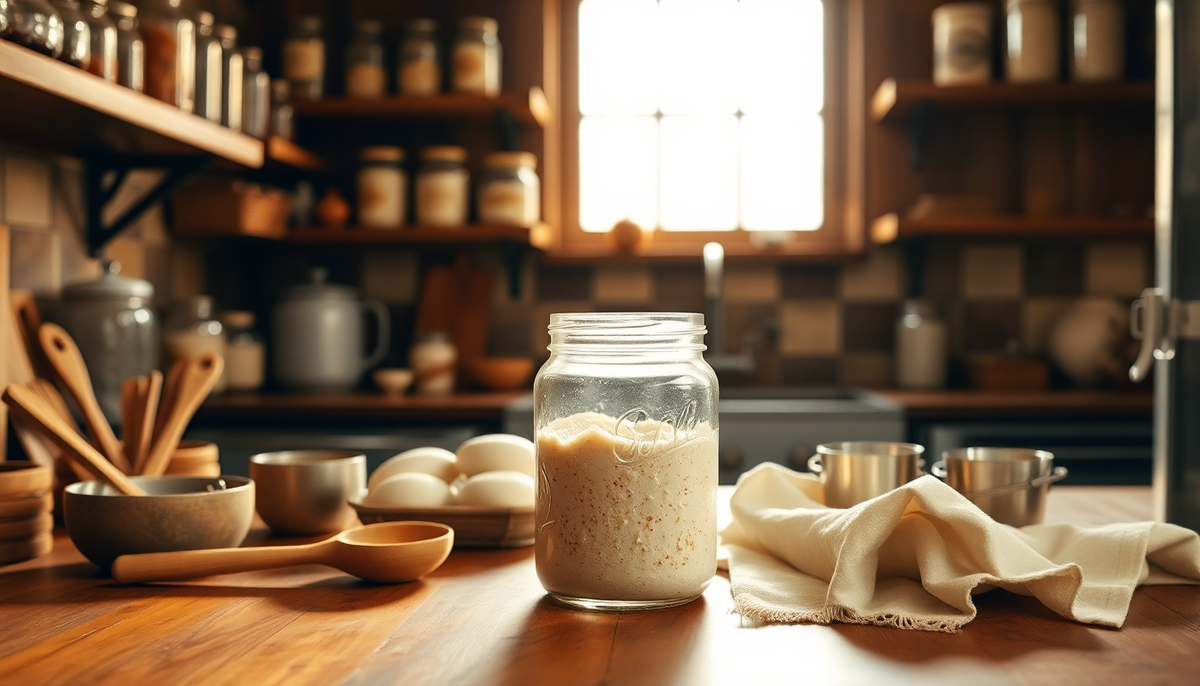
The Secrets to Storing Your Sourdough Starter
|
|
Time to read 2 min
|
|
Time to read 2 min
As a passionate Home Baker, I know the importance of maintaining a healthy sourdough starter. It's the heart and soul of any artisanal bread, and keeping it in tip-top shape can be the difference between a fluffy, tangy loaf and a dense, lifeless one. But let's be honest, storing that little jar of bubbly goodness can be a bit of a challenge, especially if you're not baking every day.
That's why I'm here to share my tried-and-true tips for storing your sourdough starter like a pro. Whether you're a seasoned baker or just starting your sourdough journey, these secrets will help you keep your starter happy and ready to go whenever the baking mood strikes.
One of the most common ways to store a sourdough starter is in the fridge. This is a great option if you're not baking as frequently as you'd like. The cool temperature of the fridge slows down the fermentation process, allowing your starter to stay active and ready for action with minimal maintenance.
When storing your starter in the fridge, be sure to feed it at least once a week. This will keep it from becoming too sluggish and ensure it's ready to go when you need it. And don't forget to let it come up to room temperature before using it in your recipes – that way, it'll be at its peak performance.
If you're going on a vacation or just need to take a break from baking for a while, the freezer is your starter's best friend. By freezing your starter, you can essentially put it into hibernation, allowing you to revive it later without losing any of its precious microbes.
To freeze your starter, simply scoop it into an airtight container or freezer-safe bag, leaving a bit of headspace for expansion. Then, pop it in the freezer and forget about it until you're ready to bake again. When you're ready to use it, simply thaw it out in the fridge overnight, feed it a couple of times, and it'll be good as new.
For those of you who bake only occasionally, or if you want to have a backup starter on hand, drying your sourdough starter is a fantastic option. By dehydrating your starter, you can create a dormant version that can be stored for months or even years, ready to be rehydrated and brought back to life whenever you need it.
To dry your starter, simply spread it out in a thin layer on a parchment-lined baking sheet and let it air-dry at room temperature. Once it's completely dry and crumbly, you can store it in an airtight container in a cool, dark place. When you're ready to use it, just add water and flour, and feed it a few times until it's bubbly and active again.
No matter which storage method you choose, the key is to find what works best for your baking schedule and lifestyle. With a little bit of care and attention, your sourdough starter can be a lifelong companion, ready to help you create delicious, homemade bread whenever the mood strikes.
So, go forth and conquer your sourdough storage woes – your future self (and your taste buds) will thank you!